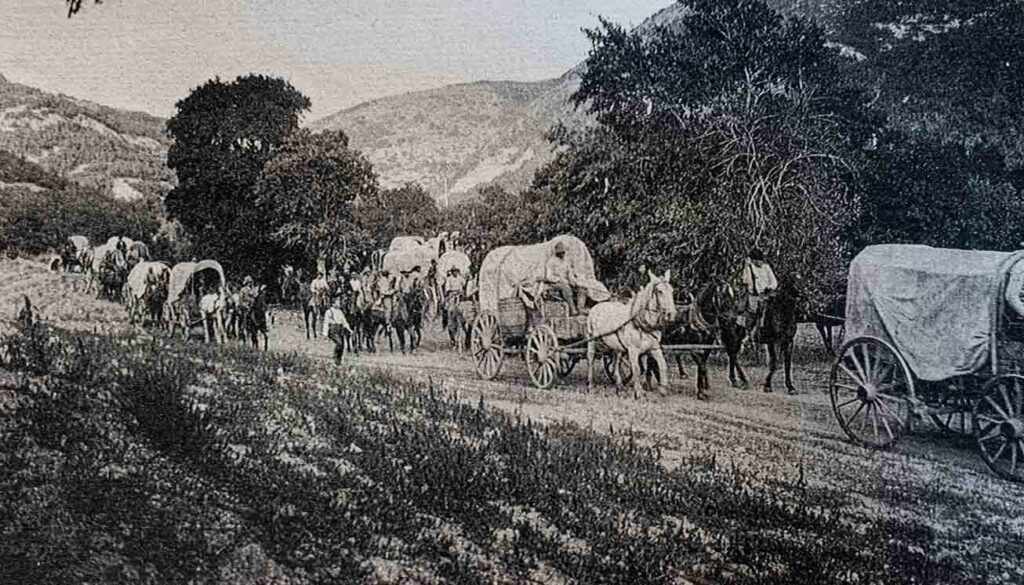
The cattle buying began in the month of October, and by April of the following year they had together between 6,000 and 7,000 Mexican longhorns which they headed for Utah over the ling trail, which was the general route of the Chisholm Trail. When they started from Texas during the month of April, many of their cattle were so poor that they had to tail them up each morning to begin the drive. The drive was really a grazing process, letting the cattle graze slowly across the plains eating the grass as they went.
At this time there were many Indians and buffalo along the route going through the Panhandle of Texas and Oklahoma, Kansas and Nebraska. The cattle were grazed during the daytime and night-herded at night. Very often bands of Indians would hold them up and demand a number of their cattle; sometimes their demands were made in very war-like tones. The McIntyres stood their ground and would compromise by giving them two or three in place of the 50 or 100 head which they demanded. Even though the Indians were a constant danger, the McIntyres considered the buffalo an even greater danger. One bunch of buffalo would start running and in their course pick up other buffalo, and soon a herd of them was on the run. It was almost impossible to change the direction of the buffalo stampede, and so there was a constant fear that the buffalo stampede would run through their herd of cattle and take a big part of it with them.
The two brothers arrived in Utah some eight months after their start from Texas with most of their cattle fat. They took up land in the Tintic district, some 100 miles south of Salt Lake City. They wintered their cattle there the first winter and sold them the following spring at $24.00 per head. These cattle had cost them $3.75 per head in Texas. After selling this bunch they went back to where Omaha is now and bought other cattle and moved them to Utah. Thus began their ranching business. They operated as partners until sometime in the ’80’s.
